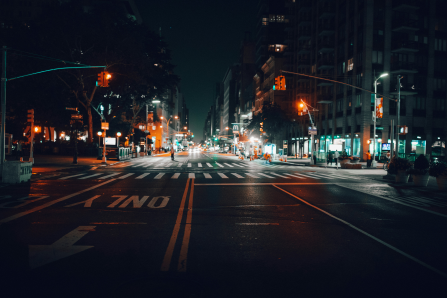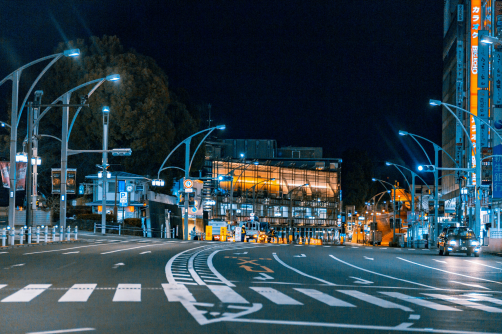Whether you’re driving to visit family, working late, or shopping at night, street lighting illuminates the way, providing a sense of safety and helping you navigate with ease. Though often overlooked, street lighting is essential in both urban and rural areas, ensuring safety and visibility after dark.
Understanding the costs associated with operating street lights is crucial for cities to manage their budgets effectively. This article delves into the key factors that influence street light costs and explores ways cities can optimize their investments in street lighting.
Main Factors Influencing Street Light Costs
1. Initial Purchase and Installation Cost
The upfront cost of street lights depends on the type of light technology and the specifications of the street light pole and fixture. For instance, Metal Halide and HPS lights typically have lower initial purchase costs compared to LED lights. However, the long-term energy and maintenance savings from LED lights often outweigh their higher initial price.
l Metal Halide (MH) Lights: Typically cost less initially, ranging between $100 to $300 per unit, depending on wattage.
l High-Pressure Sodium (HPS) Lights: Similar in upfront cost to Metal Halide, HPS lights range from $100 to $250 per light.
l LED Lights: LED street lights tend to be more expensive upfront, costing between $200 to $900 per unit. However, their energy efficiency and longevity make them a worthwhile investment for cities looking to save on long-term costs.
Installation costs also vary based on the type of light, the complexity of the project, and local labor rates. On average, installing street lights costs between $1,000 and $3,000 per light, which includes labor, equipment, light poles and electrical work. Complex installations, such as those requiring trenching for new wiring, can drive costs higher.
2. Energy Consumption and Monthly Operating Costs
Energy consumption is a critical factor in street light operation costs. The wattage of the light and the efficiency of the lighting technology directly impact monthly and annual energy bills. LED lights have a higher lumens-per-watt ratio compared to traditional lighting technologies. This means that for the same amount of power, LED lights can produce more light output.
l Metal Halide (MH) Lights: These lights typically use more energy, with wattages ranging from 250W to 400W. This higher energy consumption leads to greater monthly energy costs compared to newer technologies.
l High-Pressure Sodium (HPS) Lights: HPS lights are more energy-efficient than Metal Halide but still consume more power than LEDs, with wattages typically ranging from 150W to 250W.
l LED Lights: LEDs are the most energy-efficient option, with wattages ranging from 30W to 150W. Due to their lower energy consumption, cities can see significant reductions in monthly energy bills with LED street lights.
For example, an LED light consuming 100W might cost $3 to $5 per month in energy expenses, while a 250W HPS light could cost $8 to $12 per month, and a 400W Metal Halide light could cost $12 to $20 per month, depending on local energy rates.
3. Maintenance Costs and Lifespan
The lifespan and maintenance requirements of street lights are key considerations when calculating long-term costs.
l Metal Halide (MH) Lights: MH lights typically last between 10,000 to 20,000 hours, which equates to 2-5 years of use, depending on operating hours. They require frequent bulb replacements and can be more costly to maintain due to their shorter lifespan and higher energy usage.
l High-Pressure Sodium (HPS) Lights: HPS lights have a longer lifespan than Metal Halide lights, lasting around 24,000 hours (4-6 years), but still require regular maintenance and bulb replacements.
l LED Lights: LEDs have the longest lifespan, lasting between 50,000 to 100,000 hours (10-20 years). Due to their longevity, LED lights require far less maintenance, reducing long-term operational costs.
Maintenance costs for Metal Halide and HPS lights are higher because of the need for frequent bulb replacements and occasional fixture repairs. LED lights, with their longer life and greater durability, drastically lower maintenance expenses over time.

Ways to Minimize the Expenses on Street Lighting
a. Switch to LED Lighting
Switching from Metal Halide and HPS lights to LED technology can drastically reduce both energy and maintenance costs. While Metal Halide lamps typically consume between 250W and 400W, and HPS lights consume between 150W and 250W, LED lights often operate at just 30W to 150W for the same level of brightness. This can reduce energy bills by up to 80%. While LEDs have a higher initial cost, their lower operational expenses and longer lifespan lead to significant savings over time.
b. Smart Lighting Systems
Implementing smart lighting systems that use sensors to adjust the brightness based on the time of day, traffic volume, or weather conditions can optimize energy use and reduce unnecessary consumption.
c. Scheduled Maintenance
Regular maintenance and cleaning of streetlights can improve their efficiency and extend their lifespan, reducing the need for expensive repairs or replacements.
d. Take Advantage of Government Incentives and Grants
Many governments offer incentives, rebates, or grants for cities and municipalities that transition to energy-efficient and environmentally friendly street lighting solutions like LED lights. These programs can help offset the initial cost of purchasing and installing new lighting systems.

For over 30 years, Sansi has been a leader in the professional and commercial LED industries. Backed by strong R&D capabilities, we’ve delivered LED products and solutions for over 10,000 major projects. With our experience and expertise, we offer customized lighting solutions designed to save you money. Contact us today for a free consultation.